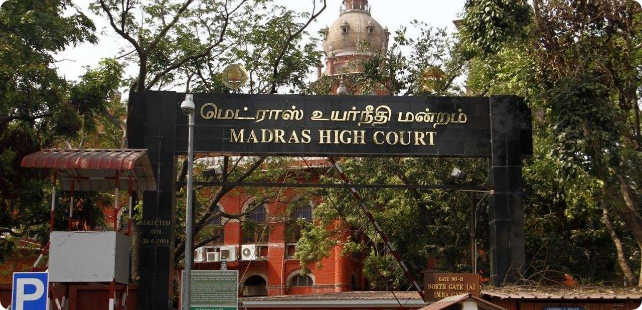A study of a Pariah community in colonial times underlines the persistence of lower caste alienation in modern Indian society
The book under review is an exciting addition to recent publications on the socio-political conditions of low-caste Pariahs living in the erstwhile Presidency of Madras at the turn of the twentieth century. Those interested in this subject matter would already be familiar with ‘Nandanar’s Children’ (SAGE Publications, 2011), which too talked about prevailing agrarian systems, socio-economic hegemonies and the role of missionaries in Pariah communities. However, Viswanath’s book re-frames the discussion to illustrate the ‘Pariah Problem’ – rising self-assertion amidst changing political landscapes and the consequences that flow from it.
At the very beginning, the author shares her predicament about the terminology – which is probably worthy of a larger essay – and whether Pariah or Dalit should be used in the book. The word Pariah (originally Paraiyar) is derived from the Tamil word Parai, referring to the hand-held circular drum made from cow-skin, an integral component of festival and funeral orchestras. Equally derisive in Tamil and English, today, the word refers to a person who is an outcast. The ‘Dalit’ terminology, though better than ‘Harijan’ or any of the other pejorative synonyms, can be misleading as the subject matter of this book is a sub-group of Dalit population confined to Tamil Nadu, as we know it today. In this context, it is perplexing why the author has not chosen to use the “Adi Dravida” terminology christened by the Madras Presidency’s Legislative Council in 1921. Adi Dravida, translates as ‘pre-Dravidian’ and refers to the indigenous nature of this community, is politically acceptable and continues in Government terminology till date.
However, in other aspects, the reader cannot ignore the eerie resonance of incidents narrated in the book with present-day Tamil Nadu. In the past three years alone, Tamil Nadu has been rocked by caste violence in Marakkanam, Nayakkankottai and Seshasamudram, resulting in breakdown of communal goodwill, destruction of property and hundreds of arrests. In Seshasamudram, little over a week ago, Dalits who were preparing to carry out a procession of the ‘ther’ (temple-car with the deity on top) were attacked with stones and petrol-bombs by members belonging to a higher caste. In her book, Viswanath retells the Kalpathy incident from 1924 about a group of low-caste Ezhavars: “When [they] entered the Brahmin street as planned on the first day of annual festival, the Brahmins protested by attacking them with stones.. and local authorities quickly attempted to restore order by preventing Ezhavars from furthering using the street”.
The book breaks new ground when it discusses the intervention of missionaries among Pariah communities. Challenging conventional wisdom, Viswanath argues that Pariahs were not the primary target of missionaries for conversion to Christianity. That would be Brahmins, as the strategy was to go for a “top down” approach in British India. Conversion of Pariahs was, according to Viswanath, initiated by Pariahs who aspired for access to education, land-ownership and economic opportunities. Stifled by the hundreds of years of agrarian serfdom and social subjugation, conversions reflected Pariahs’ desire for a better client-patron relationship.
The notes and letters left behind by missionaries are nothing short of fascinating. For instance, the book talks about Reverend William Gaudie who “painstakingly inspected” human faeces in the Pariah colony “to assess the extent of the congregation’s distress”. Gaudie’s inspections revealed “bright red seeds” which belonged to a type of cactus that was usually fed to cattle. Such incidents given an insight into the eating habits forced upon Pariah families when times were tough.
In the final chapters, the author has delved into the realm of how Pariah aspirations were thwarted by “caste elites” clothed in political power as a consequence of the newly established dyarchy. It is here that the book is found lacking is contextualising Pariah question within the country’s first backward classes political movement. Starting in 1916, the rise of the non-Brahmin Justice Party, which went on to form the Government in Madras Presidency in 1920, paved the way for five representatives of the Pariah community (Depressed Classes) to the Legislative Council. This included towering leaders such as MC Rajah and Rettaimalai Srinivasan who were then members of the Justice Party. The Justice Party’s “Communal Government Order” of 1921 was the first official reservation policy in Government employment ever to be passed in the country. The Temple Entry proclamation of 1925 allowed lower caste people to enter temples for the first time. In fact, Babasaheb Ambedkar has written about being inspired by social and political struggles of the Madras Presidency. Interestingly though, while Ambedkar believed that he “was born a Hindu, but will not die as one”, Srinivasan felt he was never “in the Hindu fold” but a “full-blooded Dravidian in race”.
In spite of this, the book has been able to put together a very important story about the struggle of a community, the colonial apathy, the interface with missionaries and an ever-growing assertion of basic human rights. Notwithstanding the birth of our Constitution guaranteeing equality and the spread of Dalit political movements, we have just not been able to solve the Pariah Problem. Kilvenmeni, Bathani Thola, Laxmanpur Bathe, Nagari Bazaar and Khairlanji are constant reminders that time is fast running out.
Manuraj Shunmugasundaram
Link to the Article: https://www.business-standard.com/article/opinion/once-a-pariah-115082701315_1.html






